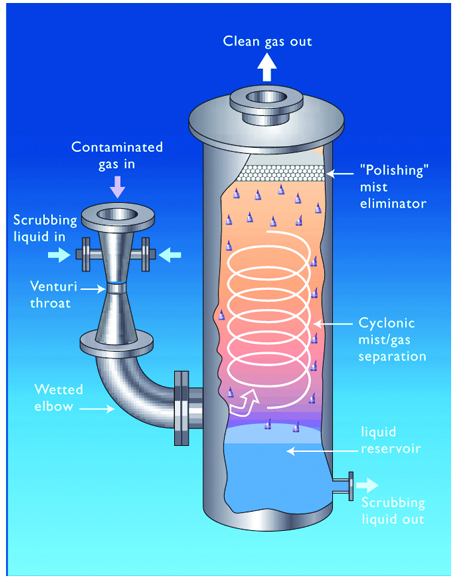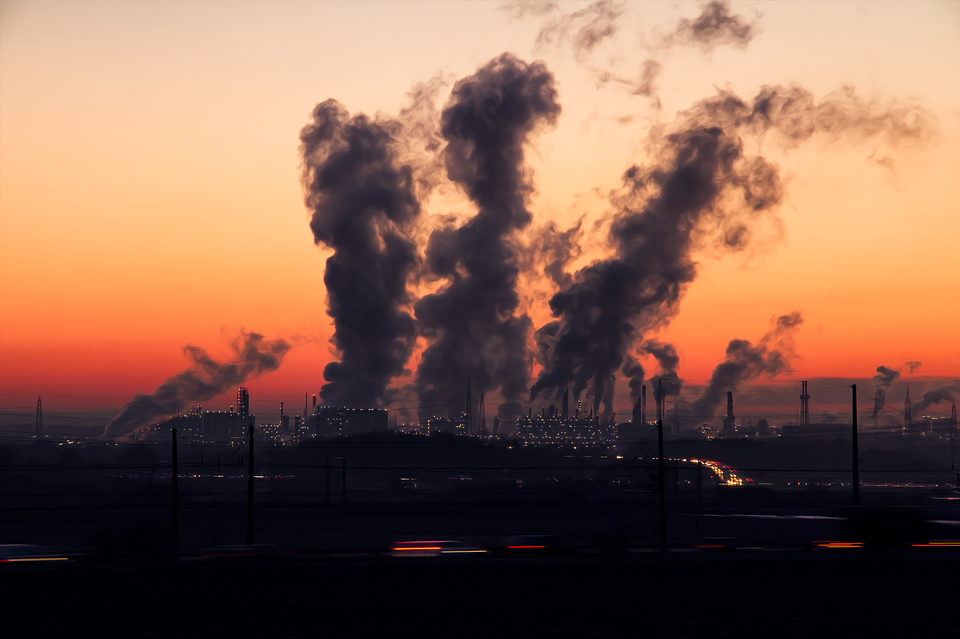Air pollution has been on the rise in the last century and this is today the one issue that is being discussed at length across the globe! It has become critical for companies to know what are the most effective methods and tools to combat air pollution. The increasing carbon emissions and acid chemicals that are released into the atmosphere have been a source of constant concern. This brings us to the question of what could be the most effective way to control air pollution and wet scrubbers have become the one solution to combat this problem. Industrial wet scrubbers are pollution control equipment that is often mandated by the regulatory authorities to encourage and aid in safety and environmental health. These are of two varieties: Wet and Dry –
In this article, we bring focus to the wet scrubbers, their operation and how they may be used to control pollution. These wet scrubbers are used in chemical process industries for the purpose of removing pollutants from gas streams.


What are wet scrubbers?
Wet Scrubbers are most effective in the fight against air pollution as control devices for removing particles and / or gases from exhaust streams in industries. An industrial wet scrubber works by introducing a scrubbing liquid into the dirty gas stream – usually this liquid is water. The scrubbing liquid collects the particles or gases. Wet scrubbers are more in demand as the best industrial pollution control equipment as it aids in collecting both particulate and gaseous pollutants in a single system. There are a few industrial wet scrubbers manufacturers in Chennai who manufacture these which comprise of a combination of absorbent material, scrubbing fluids and other material that aid in removing chemical pollutants and particulate contaminants which help in reducing the pollution caused by manufacturing as well as burning of fossil fuels.
The process may be aided by the use of chemical additives which make the pollutants undergo a reaction making them less hazardous compounds. The chemical commonly used is sodium hydroxide, or caustic (NaOH). Being a strong base, it acts as an excellent scrubbing agent removing the acid gases such as Hydrochloric acid ( HCl) and Sulphur dioxide ( SO2), and maybe employed along with Hydrogen sulfide (H2S), and certain organic macromolecules including fatty acids. These manufacturers in Chennai have perhaps become leaders in the manufacture of these wet scrubbers. There are a few facilities that use water alone and omit the use of chemicals in the process.

What makes the wet scrubbers very popular as industrial pollution control devices are:
1. Their success rate and their versatility in filtering many different kinds of pollutants. The wet scrubbers use a liquid (water, in a majority of cases) to remove the pollutants from contaminated gas streams by absorption. Water being readily available in most places, the wet scrubbers become a natural choice to fight pollution and in its control.
2. Wet scrubbers as industrial pollution control units are highly recommended as they can handle very high temperatures as well as control the moisture.
3. Flue gases get cooled with wet scrubbers and hence the overall size of the unit may be made smaller. 4. Wet scrubbers aid in removing the particulate matter as well as the gases.
5. Wet scrubbers can aid in the neutralization of corrosive gases.
6. The industrial wet scrubbers that are used today can monitor the system and make all essential adjustments.

A scrubbing vessel, a pumping system (recycling unit), exhaust stack, mist eliminator, ductwork and fan system, spent scrubbing liquid treatment unit. The common uses of these industrial air pollution control units are at Petroleum Refineries, Acid Manufacturing Plants, Chemical Processes, and in Steel Making Industries. Looking to equip yourselves with pollution control units? The wet scrubber is your best choice and we recommend this for all the reasons mentioned above.